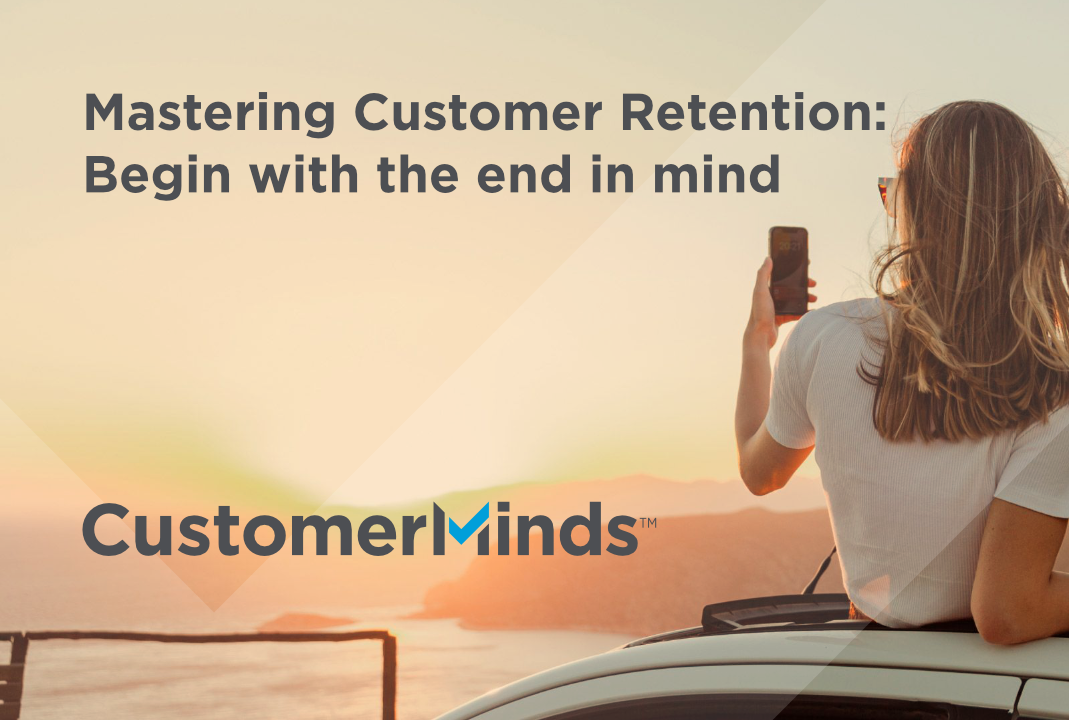Digital Innovation helps Utilities tackle cost of living crisis
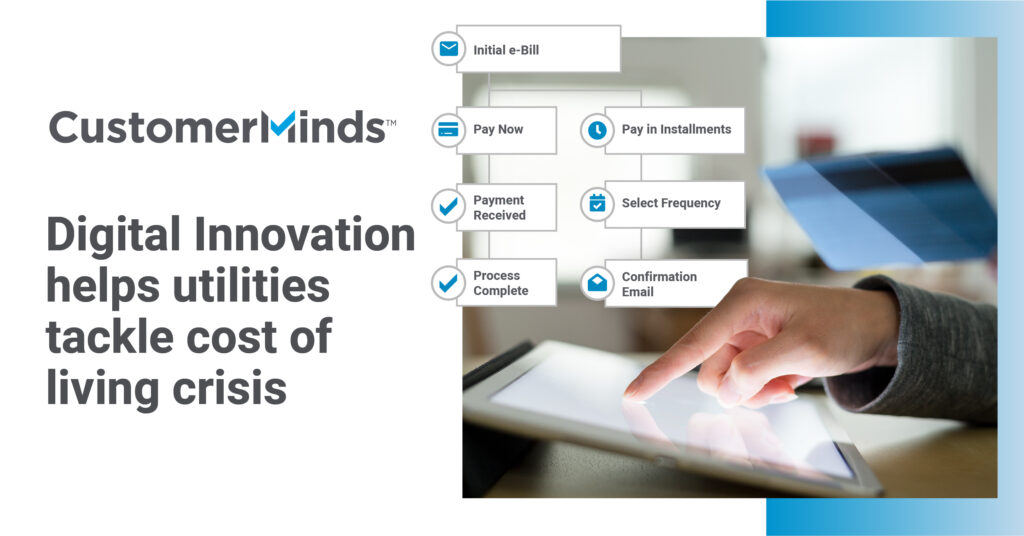
4 ways utility companies can better serve their customers in challenging times
Consumers are really feeling the pinch at the moment as prices for energy, water and other utilities continue to rise across the world. Although many governments are taking action to combat the cost of living crisis, for many people it is becoming increasingly difficult to make ends meet. Whilst there are no quick fixes available to address the macro-economic and political issues behind the current crisis, there are innovative digital steps that energy and utility companies can take to ease the pressure on the customers that they serve.
1. Increased Collections Due to Rising Costs – How Digital Can Help
There is little doubt that rapid increases in inflation and the energy crisis will inevitably lead to an increase in the volume of customers struggling to pay their bills, many of whom will fall into arrears. Due to the increased number of customers in difficulty, utility companies will have to operate in a more flexible manner when it comes to managing their arrears and collections processes. Well-designed digital customer journeys can enable collections teams to handle an increased volume of cases and help them to deal with customers in a supportive and sensitive manner.
Portsmouth Water – Digital Innovation in Billing
For example, Portsmouth Water in the UK is currently running a 3-Point Journey to support the billing and collection process that incorporates specific support for vulnerable customers. Depending on the data provided, personalised Email and SMS messages are sent out offering the customer options to ‘Pay in Full’, ‘Pay by Phone’ or they can select the ‘Unable to Pay’ option.
- The ‘Pay in Full’ option provides a self-service digital journey which enables the customer to pay down their arrears in a simple and easy manner with a couple of clicks on their phone or PC.
- The ‘Pay by Phone’ option is helpful for customers that might not feel confident inputting their details online and would rather speak to an actual human being.
- If a customer selects the ‘Unable to Pay’ option, they are taken to the ‘Help with my Bills’ section of the Portsmouth Water website where they can enquire about debt management solutions, support for vulnerable customers and options for payment breaks.
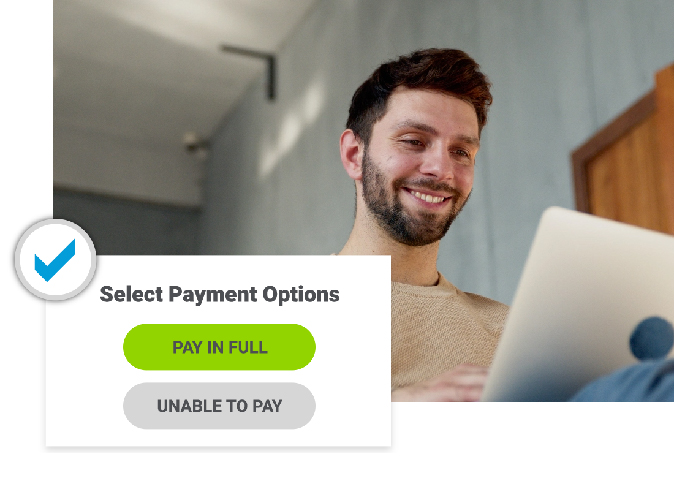
Print Files Matter
If the customer hasn’t provided an email address or phone number, hard copies of the bill are generated by the Which50 platform and transferred automatically to Portsmouth Water’s print provider for printing and postal delivery. These printed letters also include a QR code which allows the customer to easily switch away from paper based communications if they would like to engage digitally going forward.
Specific information for vulnerable customers and access to help facilities are also included with each email and SMS. If no payments have been made after the initial contact and two follow up digital communications, a printed letter will then be sent to the relevant household with all the necessary information included for someone to pay their bill and/or gain support from Portsmouth Water.
Digital Innovation in other Industries
Other services sectors are also leveraging digital solutions to support customers struggling to meet their financial commitments as the cost of living crisis bites. For example, we are working with a major UK telco to offer customised payment arrangements via a digital self-serve solution to more than one million customers per month. And within the finance sector, we are working with a number of credit union clients to deliver streamlined, multi-stage ‘Cost of Living’ email campaigns which are aimed at providing information on how a member can apply for a loan to pay their utility bills.
2. Support Vulnerable Customers During Challenging Times
Effective and supportive communication is even more critical when utilities are looking to build and maintain relationships with their most vulnerable customers. The definition of vulnerable customers according to the Financial Conduct Authority is ‘someone who, due to their personal circumstances, is especially susceptible to detriment – particularly when a firm is not acting with appropriate levels of care.’
A recent review from Consumer Council for Water found that vulnerable customers feel that their relationship with their water providers is ‘distant’ as contact between them and their provider was very rare – this has led to a lack of trust and a low awareness of available support. To develop these relationships and to improve communications, it is important to offer a wide array of communication options depending on the different preferences of the customers.
For example, people in the 18-to-25 age category, would prefer to do everything regarding their bills online or through their smartphone. According to the same review mentioned above, 65% of ‘Gen Z’ bill payers would prefer digital engagement when communicating with their water provider. CustomerMinds’ Which50 platform has the flexibility to perform a wide array of mass mailing services on digital channels including SMS, Email and secure eDocuments but it can also create hard copies of any communications for postal delivery where required.
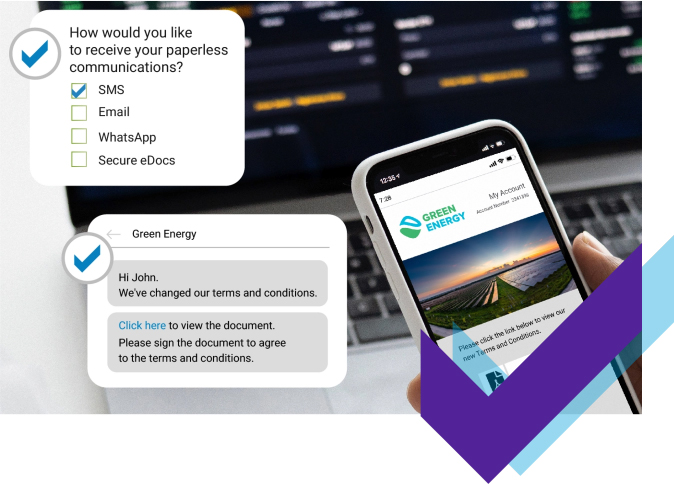
3. ESG Through Digitisation: Reduce Costs and Your Carbon Footprint
The third benefit of harnessing the power of digital innovation is that reducing paper-based customer communication can help utilities to address their environmental and sustainability goals. The maths is simple, we have seen companies switch 50-60% of their communications to digital in the first six months of a digitisation process – leading to simultaneous reductions in costs and carbon footprint!
In a previous blog post, we have written about three key factors that must now be considered when looking at the ethical impact and sustainability of a business – often referred to as ESG (Environmental, Social and Governance). The environmental criteria of ESG includes climate change, resource depletion and deforestation. Utility companies that send letters to their clients whenever bills are due or when they are sending out marketing or service communications are compounding the problem of deforestation.
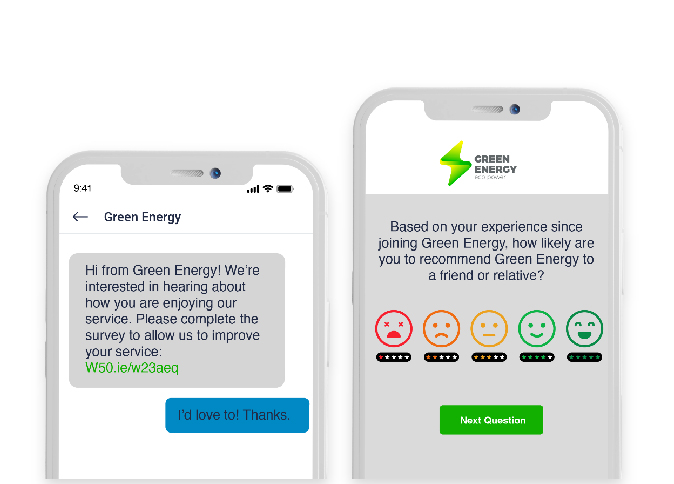
One of the issues that all brands will face is that if they don’t change, is they are going to lose customers to leaner and greener competitors. That is to say, if Utility companies want to make the world Greener, they’ve got to walk the talk and start Going Greener themselves. Surveys consistently indicate that rising generations are more likely to buy from brands that they feel share their values. Howard Schultz, the former Starbucks CEO, sees sustainability working in both directions – “If people believe they share values with a company, they will stay loyal to the brand.”
4. The Digital Innovation Opportunity
“Innovation is the ability to see change as an opportunity – not a threat.” Steve Jobs
If utility companies want to support their customers during these challenging times, whilst also striving to be more environmentally friendly, they are going to have to come up with more innovative processes to communicate with their customers. These processes will have to meet the needs of consumers in such a way that builds trust and loyalty and be smart enough to deliver personalised and targeted communications based on each customer’s current situation and standing.
As digital innovations continue to evolve the way that utility companies communicate, it is important that all customers are supported to the same level as new digital offerings are being rolled out. Any digital innovation must be integrated with existing channels of support and is unlikely to be a ‘catch-all’ solution works for all customers. A key failing with some digitisation projects is the blanket assumption that any kind of technological development is of a clear benefit to all customers because it is leveraging some cool new ‘app’ or ‘robot’ to solve all problems. It is never that simple and utility companies have a duty of care to all of their customers and must ensure that a flexible strategy and platform is used for both marketing and service communications.
Key Considerations for Digital Communications Strategy
So in conclusion, what are some of the key considerations that you need to take when looking to implement an innovative and flexible communications strategy that fits the needs of all of your customers. We like to think that the following key themes are a good place to start :
- Integrated Design: ALL customers should be considered from the start when choosing or designing new products/technologies and customer journeys. Increased awareness of vulnerabilities and diversity of backgrounds should also be cultivated within customer service teams to reduce the risk of vulnerable customers falling further behind.
- Identification and Measurement: Different customer segments can be identified more easily through the analysis of existing customer data and it is then important to monitor and measure engagement across the various communication channels. The way in which a customer interacts with a technology can tell us a lot about them and their particular requirements.
- Personal Touch: Brands need to build trust and loyalty with consistent communication that is personalised to the needs of the consumer and must not forget that people still respond to people. They should not forget however that for certain customers it may still be appropriate for them to be contacted by a member of the customer service team to support and provide guidance as opposed to just leaving them to the digital journey.
Which50 – Digital Communications Platform
CustomerMinds’ Which50 platform delivers a fully digital customer experience for Utility companies, while ensuring lower operational costs and increased internal efficiencies. Our unique solution can simply plug and play into existing business systems, allowing both marketing and servicing teams to connect with their customers through digital channels.
If you would like to find out how the Which50 platform can transform your digital journeys and bridge the gap in your digital transformation project, so that you can act quickly to get closer to your customers please fill out the form below and you will receive our monthly newsletter.
 LOG IN
LOG IN
